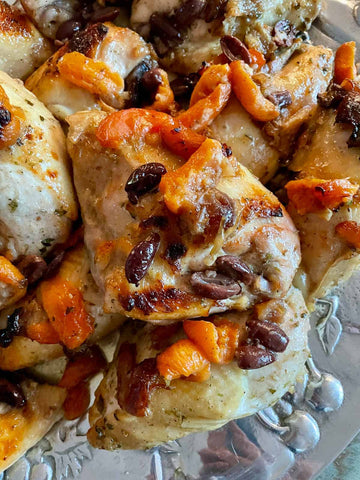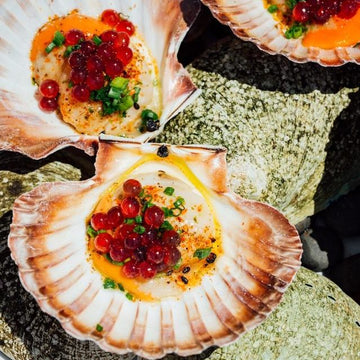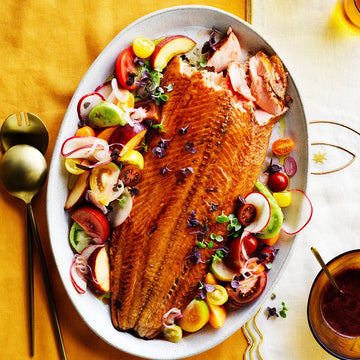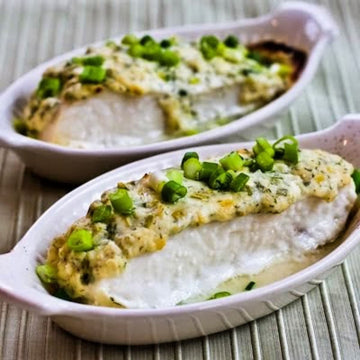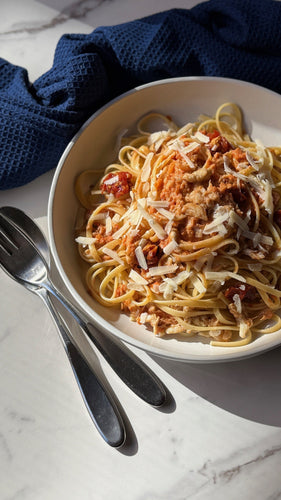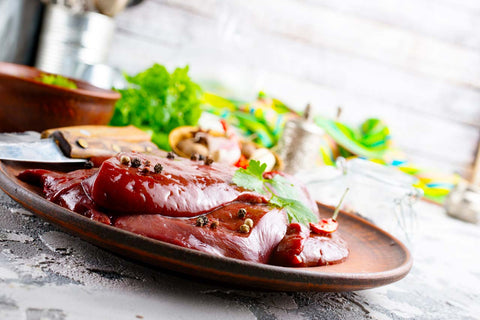
Pekin duck, known for its tender meat and rich flavor, has long been a favorite ingredient in kitchens around the world. Its adaptability makes it a star in both traditional dishes and innovative recipes, allowing home chefs and professionals alike to explore its potential. Whether you’re recreating classic recipes or experimenting with modern twists, Pekin duck offers endless culinary possibilities.
Why Pekin Duck Deserves a Place in Your Kitchen
Pekin duck, sometimes referred to as Long Island duck, stands out for its mild yet distinctive flavor and tender texture. Its balanced fat content ensures rich, succulent meat that works beautifully across cuisines. This duck’s versatility extends beyond taste—it also addresses practical concerns for home chefs seeking an ingredient that is both satisfying and adaptable.
Key attributes of Pekin duck:
Rich Flavor Profile: While flavorful, Pekin duck is less gamey than other duck varieties, making it appealing to a wide range of palates.
Cookability: Its even fat distribution ensures a moist and tender result, whether roasted, grilled, or seared.
Culinary Versatility: From traditional dishes like Peking Duck to modern interpretations, Pekin Duck adapts to both familiar and inventive recipes.
By understanding its unique qualities, you can make the most of this ingredient while addressing common culinary pain points, such as achieving consistent texture and balancing flavors.
Classic Preparations: Honoring Tradition
Pekin duck has a storied history in cuisines like Chinese and French, where it has been celebrated for centuries. Traditional recipes highlight the duck’s natural flavors, often through techniques that focus on crisping the skin and preserving the meat’s tenderness.
1. Peking Duck
Perhaps the most iconic preparation, Peking Duck, is a centerpiece of Chinese cuisine. The duck is roasted to create a perfectly crispy skin, which is often served with thin pancakes, scallions, and hoisin sauce. This dish celebrates the natural richness of Pekin duck while balancing it with light, fresh accompaniments.
2. Duck à l’Orange
A classic of French gastronomy, Duck à l’Orange pairs the savory richness of Pekin duck with the tart sweetness of orange sauce. This dish exemplifies the importance of pairing rich ingredients with bright flavors for a balanced result.
3. Confit de Canard
Another French favorite, duck confit, involves slow-cooking Pekin duck in its own fat, resulting in an incredibly tender and flavorful dish. It’s a perfect example of how traditional techniques can maximize the qualities of this duck.
By mastering these classic recipes, you not only honor the traditions behind Pekin duck but also build a foundation for experimenting with more modern techniques and flavors.
Modern Takes on Pekin Duck: Creativity Meets Flavor
For those who love to push culinary boundaries, Pekin Duck offers an ideal canvas for innovation. Its versatility allows chefs to incorporate it into unexpected dishes, blending global influences and modern trends.
1. Duck Tacos with Pickled Vegetables
Transform Pekin duck into a fusion-inspired dish by serving it in soft tacos with pickled vegetables and a tangy sauce. The combination of tender duck and crisp vegetables creates a satisfying balance between the textures and flavors.
2. Duck Ramen
Add a gourmet touch to ramen by using shredded Pekin duck instead of traditional pork or chicken. The duck’s rich flavor enhances the broth while providing a unique twist to this comforting dish.
3. Duck Salad with Citrus Vinaigrette
Pair sliced Pekin duck breast with mixed greens, citrus segments, and a light vinaigrette. This modern interpretation highlights the duck’s richness while keeping the dish fresh and approachable.
Innovative recipes like these show how Pekin Duck can inspire creativity in the kitchen while addressing the desire for fresh, exciting meals.
Overcoming Common Challenges in Cooking Pekin Duck
While Pekin duck is known for its adaptability, some chefs may hesitate to work with it due to perceived challenges. Understanding the solutions to these issues can help you cook with confidence.
1. Achieving Crispy Skin
Crispy skin is a hallmark of many duck recipes but can be difficult to perfect. To achieve this, dry the duck thoroughly before cooking, score the skin to render the fat, and roast or sear at high heat.
2. Balancing Richness
The natural richness of Pekin duck can sometimes feel heavy. Pairing it with acidic or fresh ingredients, such as citrus or pickled vegetables, creates balance and enhances the overall dish.
3. Managing Cooking Times
Cooking duck evenly requires attention to detail. Use a meat thermometer to ensure the breast reaches an internal temperature of 135°F for medium-rare or 160°F for well-done while ensuring the legs are cooked through.
With these techniques, you can confidently prepare Pekin duck for any occasion, from elegant dinners to casual gatherings.
Pairing Pekin Duck with Flavors and Sides
Pairing Pekin duck with complementary flavors and sides enhances its versatility and creates a well-rounded meal. Here are some pairing ideas to consider:
Fruits: Citrus fruits like orange or pomegranate add brightness, while stone fruits like cherries or plums provide depth.
Grains: Quinoa, wild rice, or polenta offer neutral bases that let the duck’s flavor shine.
Greens: Bitter greens like arugula or kale balance the duck’s richness, while roasted Brussels sprouts or asparagus add a satisfying texture.
By thoughtfully pairing Pekin duck with these ingredients, you can create dishes that are flavorful and balanced.
Why Pekin Duck Appeals to Home Chefs and Professionals
Pekin duck addresses the needs of both home cooks and professional chefs. For home cooks, it provides an opportunity to explore new flavors and techniques, offering an ingredient that feels both special and accessible. For professionals, Pekin duck’s consistency and adaptability make it a valuable addition to any menu.
Its ability to connect tradition and innovation allows chefs at all levels to create dishes that resonate with their audience, whether it’s a comforting classic or a bold modern creation.
Elevate Your Cooking with Pekin Duck
Pekin duck is more than just a versatile ingredient—it’s an invitation to explore the rich traditions and creative possibilities of gourmet cooking. From classic recipes that honor its heritage to modern interpretations that push culinary boundaries, this ingredient has the power to transform your kitchen. By understanding its unique qualities and mastering key techniques, you can confidently bring out the best in Pekin duck, addressing both the personal and practical aspects of cooking.
Whether you’re seeking to impress guests, experiment with flavors, or simply enjoy a satisfying meal, Pekin Duck delivers an experience that is as rewarding as it is delicious. Explore its versatility, and let it inspire your next culinary adventure.
FAQs when Exploring the Culinary Versatility of Pekin Duck
What is Pekin duck, and what makes it unique?
Pekin duck, also known as Long Island duck, is prized for its tender meat, mild flavor, and balanced fat content. Unlike other varieties of duck, it is less gamey, making it versatile and appealing to a wide range of palates.
What are some classic recipes for Pekin duck?
Traditional recipes include:
Peking Duck: Known for its crispy skin, it is served with pancakes, scallions, and hoisin sauce.
Duck à l’Orange: A French classic pairing savory duck with a tangy orange sauce.
Confit de Canard: A slow-cooked French dish where the duck is preserved and cooked in its own fat.
Can Pekin duck be used in modern or creative recipes?
Yes, Pekin duck is highly adaptable. Some creative recipes include:
⦾ Duck tacos with pickled vegetables for a fusion twist.
⦾ Duck ramen, where shredded duck enhances the broth’s richness.
⦾ Duck salad paired with citrus vinaigrette and fresh greens for a lighter dish.
How do I achieve crispy skin when cooking Pekin duck?
To achieve crispy skin, follow these tips:
⦾ Dry the duck thoroughly before cooking.
⦾ Score the skin to help render all the fat.
⦾ Use high heat when roasting or searing to create a crispy texture.
What flavors pair well with Pekin duck?
Pekin duck pairs well with:
Fruits: Citrus (orange, pomegranate) and stone fruits (cherries, plums).
Greens: Bitter greens like arugula or kale balance its richness.
Grains: Wild rice, quinoa, or polenta serve as neutral bases.
What are the key challenges when cooking Pekin duck, and how can I overcome them?
Common challenges include:
Crispy skin: Use proper drying, scoring, and high heat techniques.
Balancing richness: Pair with acidic or fresh ingredients to lighten the dish.
Cooking evenly: Use a meat thermometer to ensure proper internal temperatures: 135°F for medium-rare and 160°F for well-done.
Is Pekin duck suitable for home cooks?
Yes, Pekin duck is perfect for home cooks looking to explore gourmet cooking. It is straightforward to prepare and adaptable to a variety of recipes, making it a rewarding choice for both special events and everyday meals.
Can I use Pekin duck for entertaining guests?
Absolutely. Pekin duck’s rich flavor and versatility make it an impressive centerpiece for dinners, whether you’re serving a traditional Peking Duck or a creative modern dish like duck tacos.
Is Pekin duck healthy to eat?
Pekin duck is a good source of protein and contains essential nutrients. Its balanced fat content adds flavor while providing energy, making it a satisfying ingredient when enjoyed as part of a balanced diet.
Why is Pekin duck popular among professional chefs?
Professional chefs value Pekin duck for its consistency, tender meat, and ability to work well in both traditional and innovative dishes. Its versatility makes it a staple ingredient in many kitchens worldwide.
Jan 03 2025




